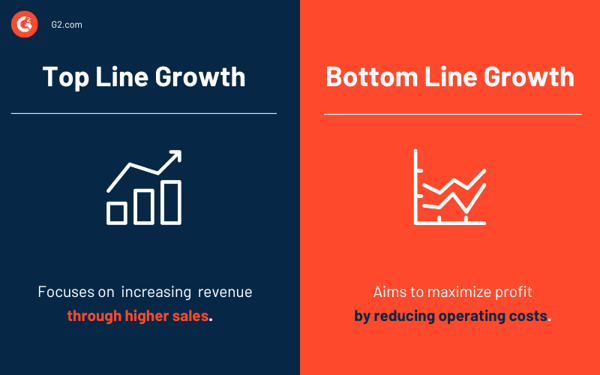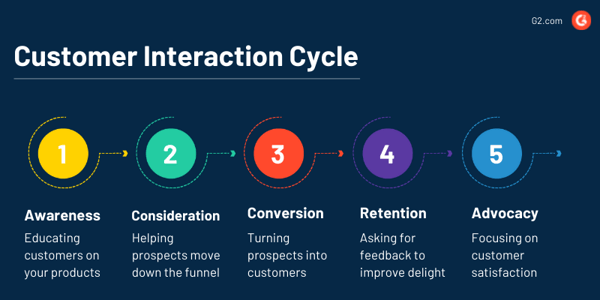Digital marketing is noisy. Algorithms change weekly. And good leads? They’re getting harder and more expensive to find.
That’s why trade shows still matter. In one room, over a few days, you can connect face-to-face with decision-makers, see what competitors are up to, and put your product in front of people who are actually ready to buy.
What is a trade show?
A trade show is an organized event where companies in a specific industry exhibit their products and services to potential buyers, partners, and media. Trade shows generate leads, build brand visibility, and foster industry networking.
Typically, trade shows are held once or twice a year over the course of several days. Attendees are usually other businesses in the same industry, while some trade shows are open to members of the public who could become leads.
Prepping for a trade show requires lots of steps, so many businesses use event planning software to organize their team to track what needs to be accomplished ahead of time to guarantee a successful event.
TL;DR: Everything you need to know about trade shows
- What is it? A trade show is a large-scale B2B event where companies from the same industry gather to showcase new products, build business relationships, and explore market trends.
- Why do trade shows matter for B2B marketing?Trade shows are valuable for B2B marketing because they promote in-person networking, generate sales, and enhance brand visibility in ways digital channels can’t match.
- Types of industries that use trade shows: Construction, automotive, healthcare, agriculture, energy, hospitality, and food service.
- How do trade shows generate leads? Trade shows generate leads by facilitating booth interactions, product demos, and speaking engagements, delivering personalized experiences.
- Where do trade shows fit in the marketing funnel? They are powerful mid-to-bottom funnel tools that support brand awareness, consideration, and direct deal-making with qualified prospects.
- What do you need for a successful trade show event? To host a successful trade show event, you should do detailed pre-show planning, including budgeting for booth design and travel, training staff, creating engaging booth experiences, promoting on social media, and following up after the show.
- Popular trade show planning tools: Event planning platforms like monday Work Management, ClickUp, Cvent Event Marketing & Management, Wrike, Whova help manage logistics and simplify team coordination.
Trade shows vs. expos vs. conferences: What’s the difference?
Trade shows, expos, and conferences may seem interchangeable, but each serves a unique purpose in the world of business events. Choosing the right one depends on your goals; whether that’s generating leads, building brand visibility, or expanding knowledge through industry insights.
| Event type | Primary audience | Key focus | Typical format | Lead gen potential |
| Trade show | B2B buyers and sellers | Sales, demos, networking | Booths, exhibits, floor walks | High |
| Expo | Consumers and industry mix | Visibility, buzz, launches | Product showcases, experiences | Medium |
| Conferences | Industry professionals | Learning, trends, thought leadership | Panels, workshops, keynotes | Low–medium |
- Trade shows are primarily B2B events designed to foster connections between vendors and buyers. Companies exhibit their products and services in booth spaces to attract leads, form partnerships, and close deals. The emphasis is on hands-on demos and one-on-one interactions.
- Expos are more consumer-facing, often drawing a broader audience that includes both professionals and the general public. These events focus on showcasing innovations, creating buzz, and driving high-volume product exposure. Think big tech expos or food and wine festivals.
- Conferences are education-forward. These events bring together thought leaders, speakers, and professionals to discuss trends, share research, and promote professional development. Booths may be present, but sessions and speakers are the main draw.
Hybrid and virtual trade shows: What’s changed since 2020
Since 2020, the definition of “event” has expanded. Lockdowns forced the entire industry to go digital, and while in-person is back, the tech-driven flexibility of virtual and hybrid events has stuck around.
Virtual trade shows mimic live events through online platforms where attendees can “walk” a virtual expo floor, join live-streamed sessions, and even network via chat. These are great for global access and lower overhead, but they often lack the spontaneous conversations and hands-on demos that drive real buying decisions.
Hybrid trade shows combine both worlds: in-person attendees interact at booths and sessions, while remote attendees access a curated digital experience. Virtual booths often stay open for days or weeks after the event, extending the lead-gen runway.
Hybrid formats are especially useful for:
- Extending reach across time zones
- Engaging decision-makers who can’t travel
- Tracking attendee behavior digitally
Still, for industries that rely on physical interaction (like manufacturing, food, or construction), nothing beats the energy and impact of face-to-face engagement.
What industries benefit most from trade shows?
Some industries naturally fit the trade show model more than others. Some of the most popular industries have shows organized by their trade associations.
Agriculture
Agricultural and forestry trade shows are open to farmers, florists, agricultural scientists, and even representatives from government organizations like the National Park Service. These shows highlight the latest innovations in the industry, such as new equipment, seeds, growing techniques, or climate-focused adaptations to existing technology.
Automotive and transportation
For over a century, automotive and transportation trade shows have been the first place to unveil new innovations. Companies use the shows to demonstrate new cars, planes, motorcycles, boats, and other vehicles.
Construction
Contractors, architects, and designers all attend construction and manufacturing trade shows throughout the year. This has become particularly important in recent decades because of the shift toward more eco-focused building designs and sustainable materials.
Some construction trade shows are fairly broad, like the International Builders Show, while others concentrate on specific niches within the field, like green construction or corporate building practices.
Energy
Much like construction, energy and power technology has changed significantly over the last century. Their trade shows range from high-level corporations that control global power and energy to smaller, local business operations that offer energy-saving technology, like solar panels.
Because climate change presents a constant concern for this field, many of the associated trade shows now specialize in green energy technologies and innovations.
Food and hospitality
Restaurants and hotels are some of the biggest businesses to host their own trade shows every year. Events like those organized by the National Restaurant Association draw in thousands of visitors from all over the world, both those who work in the industry and consumers who are interested in learning more about the latest in the food, wine, and hospitality world.
Medical and pharmaceutical
It’s not only doctors who attend medical trade shows; their representatives and academic medical researchers also have good reason to make an appearance. New devices, medications, and healthcare techniques often debut at these trade shows, giving medical professionals an opportunity to learn more about the most current developments.
Because it’s such a broad field, multiple medical trade shows are often organized each year by specific advisory boards dedicated to specialties within the medical industry.
How do you prepare for a successful trade show?
A solid to-do list is the best way to set yourself up for success at a trade show. Here are a few ways you can make your next trade show a good use of time and money before you even set foot in the venue.
Your trade show planning checklist
- Set clear event goals (brand awareness, leads, sales)
- Choose and train the right team
- Design a booth that stands out visually
- Plan your logistics (shipping, travel, storage)
- Create a pre-show promotion strategy
- Pack marketing materials and lead capture tools
- Schedule post-show follow-up workflows
Create a budget
While one of the biggest benefits of attending a trade show is the potential for meeting new customers and making sales, it’s vital that you take into account the money you’ll need to spend to participate in the show.
A good way to calculate how much you’ll need to set aside is to multiply your booth space cost by three. For example, if your booth at a national show costs $30,000 for a 3-day event, the total budget you should be allocating for all trade show costs would be around $90,000.
The bigger your booth, the higher the cost will be. That also means you’ll need to set aside additional funds for marketing materials and signage for your booth, along with any special lighting or other show services like electrical utilities you might need. Marketing costs ahead of attending the show should also be considered if you’re planning to run paid advertising or show sponsorships.
If the trade show isn’t local, you should also plan for shipping, storage, and insurance costs for any products you need to take with you. Like with marketing materials, the size of your booth will determine how much inventory you can take with you and how many staff members you’ll need to work there.
For hourly employees, the additional budget may be needed to pay them for extra work time during the trade show that would be above and beyond their routine hours. But even with salaried employees, there are still staffing costs to factor in. You may need to make a budget that accounts for accommodation, transport, and food for the team while at a multi-day trade show.
Prepare your team
Choosing who to take with you to a trade show is a big decision that can significantly affect how much revenue you drive from leads or sales at the event. While it may be tempting to send only your best salespeople, consider how those individuals normally close a deal; if they’re better on the phone, an in-person event may not be the right fit for them.
Ultimately, you want approachable and friendly representatives who have an in-depth understanding of your industry, and who feel comfortable discussing the benefits of your products or services in overcoming industry challenges.
Once you’ve decided who you want to bring, work with them to create a plan for the event and set expectations. Everyone should have a specific role and be responsible for a number of elements, like managing the marketing materials or networking with other vendors at their stands. You’ll also want to quickly review any company information you need them to talk about and good conversation guidelines to stay on brand.
Design your stand
This is one of the most crucial parts of your preparation. You want to make sure that your brand stands out among other vendors and that any visual elements accurately represent your company.
Try to avoid colors that blend in with other vendors. If you can find out in advance which companies your booth will be next to, take a look at their brand colors and what they might be using so you can avoid these options on your own stand!
Lighting is a great way to draw attention to specific areas of your booth, as can moving graphics or interactive elements that encourage people to stop instead of simply walking by. Like any good visual design, create a focal point to direct attention to a specific area.
If you’re taking any demo products with you, consider how you want to incorporate them into the overall design of your stand. Always make sure they actually work before you leave your office or warehouse!
Promote your appearance
Connect with vendors, customers, or competitors ahead of time on social media. Tell your followers where you’ll be and when so they can easily find you. If you’re running any kind of promotion or giveaway at the trade show, be sure to talk about this ahead of time to lure in visitors.
Follow up afterwards
Once the trade show is over, stay in touch with any new connections you’ve made there. Whether it’s vendors you’re interested in partnering with or potential customers who want more information, always send a quick email letting them know it was nice to meet them.
How do trade shows fit into your marketing strategy?
Trade shows play a critical role in the mid-to-bottom of the funnel. They help convert interest into intent by giving your team face time with decision-makers, speeding up sales cycles, and reinforcing brand credibility. Use them to support product launches, nurture existing prospects, or strengthen your presence in key markets.

More than your average newsletter.
Every Thursday, we spill hot takes, insider knowledge, and news recaps straight to your inbox. Subscribe here
What are the key benefits of attending a trade show?
Although they can quickly become chaotic environments, trade shows offer a number of benefits that support a company’s offline marketing efforts.
- Face-to-face networking: Meeting with vendors, customers, and even competitors are some of the best parts of trade shows. All of these connections help improve your business and, ultimately, generate more sales. You might just meet your next great collaborator.
- Gaining industry insights: Trade shows are an opportunity for everyone to demonstrate the latest and greatest of what they’re working on. Most offer workshops, guest speaker presentations, and other helpful market updates that provide insight into what’s new in your industry.
- Increasing brand awareness: While your online marketing is likely your top traffic driver, don’t forget about how lucrative these in-person events can be. Thousands of people attend trade shows every year, after all. Having a stand at a trade show can significantly improve your brand’s credibility in the industry, as well as give you a chance to introduce yourself to both customers and vendors.
- Generating new leads: Having one-on-one time with potential customers at a trade show can lead to more sales. It’s a more personalized experience than online, and you get to provide tailored recommendations or answer any questions. Even if you don’t make the sale at the trade show, those relationships you develop there can pay off later.
- Hearing customer feedback: If the trade show is open to the public, this is a good time to get feedback from your real users. You can share this information with your development team so they have explicit customer preferences in mind when designing new products or services.
67%
of exhibitors view trade shows as an effective method to generate sales.
Source: Explori
What are the biggest trade show challenges for businesses?
Attending a trade show can be beneficial for businesses in a range of industries, but there are plenty of challenges to face as well.
- How to stand out in the crowd: Depending on the size of the show, hundreds of other businesses who do exactly what you do will be in the same room, all trying to grab the attention of attendees. It can be difficult for brands to make themselves known, especially smaller brands that have never been to a trade show.
- How to measure return on investment (ROI): Tracking any form of offline marketing comes with difficulties, and this is especially the case at trade shows. To get ahead of the problem, create a dedicated URL to place on physical trade show marketing materials. This way, you can monitor the traffic that comes directly from the show. Concrete numbers can help prove ROI to leadership who may not be convinced of the benefits of a trade show.
- How to work through the logistics: There’s plenty to remember when you’re attending a trade show, from marketing materials for your stand to coordinating travel and accommodations for staff. Having a detailed schedule and plan in place is the best way to manage everything you need to take care of ahead of time.
What is the best event planning software for trade shows?
The best event planning software helps you manage the logistics of running and attending in-person events, conferences, and trade shows. On G2, you can see how event managers use features like scheduling, spend tracking, and resource allocation to run trade shows that bring results.
To be included in the event planning software category, platforms must:
- Facilitate the logistical planning of an event, including layout functionality such as floorplan development and seating charts
- Enable exhibitor payment and invoicing, employee resource allocation, agenda development, and/or abstract submission.
* Below are the top 5 leading event planning software platforms from G2’s Summer 2025 Grid® Report. Some reviews may be edited for clarity.
1. monday Work Management
monday Work Management is a customizable event planning software that allows teams to collaborate remotely and stay on track with planning goals and action items. Dashboards and automated features create flexible workflows for any sized team.
What G2 users like best:
“The platform itself feels so smooth. It was really well developed. The dark night look is cool, the features itself are awesome, dashboards and teams are good enough, the views are understandable. And you can change the views for the CRM dashboard, which I consider is really helpful. I love the automation of tickets.”
– monday Work Management Review, Gerado H.
What G2 users dislike:
“Our organization has so many monday pulses that it gets difficult to find the one you’re looking for when you need it. Is it possible to automatically tag the user and everyone connected to each pulse every time an update is given? I shouldn’t have to tag everyone (@name) every time I make a comment in a pulse to ensure that they get a notification of the update.”
– monday Work Management Review, Roger N.
2. ClickUp
ClickUp is an all-in-one productivity tool that gives teams the opportunity to plan, organize, and collaborate on tasks using features like docs, chat, goals, and whiteboards.
What G2 users like best:
“As an operations manager, I oversee multiple remote teams. I like that I’ve been able to create various workflows that match each team’s needs. It’s been more customizable and supportive for tasks that vary pretty widely than the average productivity platform.”
– ClickUp Review, Kimberly C.
What G2 users dislike:
“There are so many features that it can feel like you are not using it to its fullest and then you wonder what you might be missing out on.”
– ClickUp Review, Mary F.
3. Cvent Event Marketing & Management
As a full service event planning platform, Cvent offers tools to manage every stage of an event lifecycle. Its features help you find suppliers, manage attendees, host sponsors, and gather data on every event.
What G2 users like best:
“Cvent has helped us pivot from in-person events to virtual events with ease. We were able to take an already curated list of people in attendance and invite them to a virtual event. They also now have an online webinar hub that makes it easier to host videos and other things as a repository to capture people well after an event has happened.”
– Cvent Event Marketing & Management Review, Rachel S.
What G2 users dislike:
“The system is very robust and sometimes you get confused because there are multiple ways to accomplish the same task. I think people get caught up in all that is possible and come up with ways to use the software so that simple tasks become hard.”
– Cvent Event Marketing & Management Review, Tyler M.
4. Wrike
Wrike is a project management platform that helps teams plan and coordinate events with tools like task tracking, calendars, and Gantt charts. It helps streamline communication, manage deadlines, and keep event planning organized from start to finish.
What G2 users like best:
“I really like how Wrike helps our team stay aligned across multiple projects and deadlines. The customizable dashboards and task views make it easy to see who’s working on what, and the built-in collaboration tools (like comments and file sharing) reduce the need for endless email threads. It’s also super helpful that we can track time and set up workflows that match how our team actually works – less jumping between tools, more getting things done.”
– Wrike Review, Nikita C.
What G2 users dislike:
“The numerous features and ways to view work is both a gift and a curse to Wrike. Having so many ways to view your work can overwhelm my team sometimes, making onboarding and training a little difficult. There is a learning curve to using the features. The Wrike Support and training videos are very helpful, the team just needs to take the time to use them.”
– Wrike Review, Hayden W.
5. Whova
Whova is an event planning and management software that helps organizers stay on top of event logistics. An award-winning platform, global companies use it to plan and execute events of all sizes.
What G2 users like best:
“Whova was very intuitive to use, helping me stay on track with where I was supposed to be and when. It was also very simple to ask questions of the presenters and others attending the conference. Because everyone’s contact information was already at our fingertips, we didn’t have to pass out 200 business cards!”
– Whova Review, Melissa L.
What G2 users dislike:
“I was overwhelmed by the number of polls, questions, comments, and community interactions.”
– Whova Review, Jason J.

Frequently asked questions about trade shows
Got more questions? We have answers!
Q1. What are trade shows used for in business?
Trade shows are used to showcase products, connect with industry peers, generate leads, and build brand awareness. They serve as high-impact opportunities for in-person engagement, especially in B2B industries where relationship-building is key to closing deals.
Q2. Are trade shows still relevant in 2025?
Yes, trade shows are still relevant in 2025. Despite the rise of digital marketing, trade shows remain valuable for industries that value face-to-face interactions and product demonstrations. In fact, many companies use them as hybrid touchpoints alongside their digital strategies to drive high-quality B2B engagement.
Q3. How do I make my trade show booth stand out?
Start by designing something eye-catching with bold visuals and interactive elements. Think touchscreen demos, giveaways people actually want, or even a creative theme. Make it easy for people to understand what your company does within the first few seconds of walking by.
Q4. What’s the best way to prepare for common trade show issues?
Trade shows rarely go 100% to plan. Tech can glitch, shipments get delayed, and people call out last minute. For non-tech industries, that might mean lost signage, spoiled samples, or weather-related hiccups. Pack backups, test everything early, and build a flexible schedule. A solid Plan B is what keeps your booth running smoothly when the unexpected hits.
Q5. What’s the difference between a trade show and a virtual trade show?
A traditional trade show is in-person and all about face-to-face interaction. A virtual trade show happens online and typically includes digital booths, webinars, and chat tools. Both have pros and cons; virtual events are more scalable, but in-person events drive deeper connections.
Q6. How do hybrid trade shows work?
Hybrid trade shows combine in-person and virtual experiences. Attendees can either visit the physical venue or join online through a platform that offers live streams, virtual booths, chat tools, and downloadable resources. Exhibitors engage both audiences with demos, presentations, and digital follow-up. Hybrid formats extend event reach while offering flexibility for those who can’t attend in person.
Q7. How do I calculate trade show ROI?
Track the number of leads, sales closed, partnerships formed, or press coverage you get, and compare that against your total investment (booth, travel, promos). Pro tip: Use unique URLs or promo codes at the show to trace engagement back to specific campaigns.
The real ROI of face-to-face
Trade shows work because people still buy from people. One booth conversation can move a deal faster than weeks of email follow-ups. In-person events cut through the noise: you meet real prospects, get direct feedback, and build relationships that stick.
If you’re weighing whether trade shows are worth it, they are. When done right, they generate leads, deals, and momentum.
Need help choosing the right tools to plan your next event? Check out the best event management platforms on G2.
This article was originally published in 2024. It has been updated with new information.



